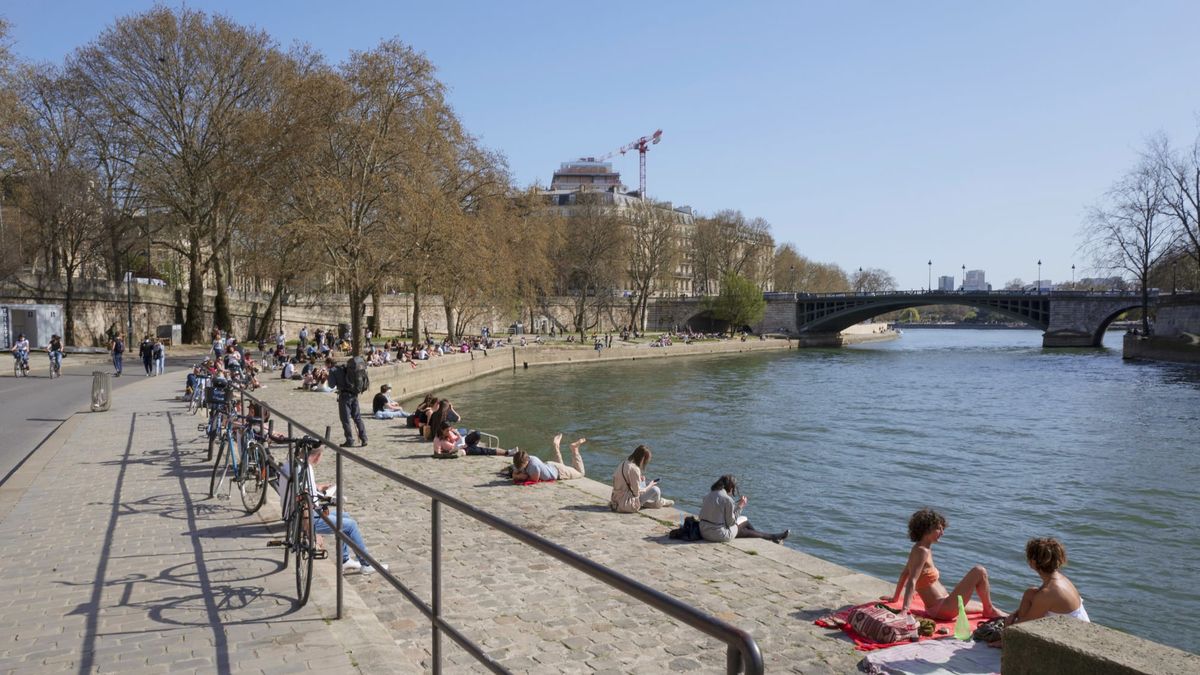Before long, visitors to Paris could take a swim in the Seine
The French capital has been trying to clean up the river for decades, and the 2024 Summer Olympics could be just what’s needed.

Paris may have one of the most beautiful urban rivers in the world, but attempts to render the Seine safe to enough to plunge into have been falling short since as far back as 1988, when then-Mayor Jacques Chirac made a never-fulfilled promise to swim in it within five years.
More recently, in 2017, the city opened swimming facilities along the more sheltered Canal Saint Martin, which runs through eastern Paris before opening onto the Seine. But even this smaller, more manageable waterway has had to be closed at times when bacteria levels in the water rose too high.
Now, however, the city has a plan that might be able to curb pollution more permanently, making it swimmable – and usable as a competition venue – in time for the 2024 Summer Olympics.
Under a public garden near the Left Bank’s Gare D’Austerlitz, Paris is now building a vast subterranean water tank that will store stormwater to prevent sewage spilling into the river when the city’s drains overflow during heavy rain.
Paris’ dirty secret
The city’s 19th century sewer system mixes sewage with rainwater, and during heavy downpours can be overwhelmed by the volume of liquid it needs to channel. On such occasions, the mixed water and waste discharges into the Seine through 44 storm drains.
Over 2 million cubic meters of sewage-contaminated water finds its way into the river this way, leaving the river infested with a host of harmful bacteria. This is still an improvement on levels in the 1990s, which were 10 times as bad.
To be fair to Chirac, his rash promise preceded a program of major sewer system improvements that did indeed reduce pollution significantly.
Today, the number of species of fish living in the river has increased markedly. But while the water is now clean enough for occasional sporting use – current mayor Anne Hidalgo’s son, professional swimmer Arthur Germain, swam the Seine from sea to source this past summer – swimming is still illegal in the river’s urban stretches, thanks to bacteriological and boat-traffic risks.
And sewage overflows are only likely to become more frequent due to the more intense rain events heralded by climate change.
Underground tanks and tubes
That’s where the new stormwater holding tank comes in. With a capacity of 46,000 cubic meters it could comfortably swallow enough water to fill an Olympic-sized swimming pool about 30 times over.
The tank is an “extraordinary project of exceptional size unprecedented in a city as dense and constrained as Paris,” the city’s chief water engineer told newspaper Journal Du Dimanche.
It will cost €1.4bn and remain entirely invisible at the surface level and there will be enough space for trees to grow in the topsoil of the garden above.
Connected by underground tubes to sewers on both sides of the Seine, the tank will pump its contents back into the system over 24 hours once the heavy rain has passed.
It is still not completely guaranteed that the tank will be able to keep the Seine free of sewage.
While the amount of discharge into the river will be slashed, the city estimates that 100,000 cubic meters of waste water will enter the river annually – a volume that might still make the river worth avoiding after heavy rain.
Nevertheless, the fact that Paris is prepared to invest so heavily in cleaning the river is a sign of just how much symbolic power the concept of a pristine urban river has.
A European trend
Paris is far from alone among European cities that are trying to clean up their waterways.
Berlin has had a longstanding plan, still going through the process of official approval, to make one central arm of the River Spree suitable for swimming by installing an stretch of reed beds to filter the water before it reached the swimming basin.
A vision for London called the Thames Baths would deploy floating freshwater swimming pools along the river.
Along with its new storm tank, Paris is also conducting a similar micro-experiment with water purification. It is installing some reed beds in the Bois de Boulogne park to see if they could be used to filter rainwater polluted by contact with roadways.
Paris will not just get a cleaner environment. It will be able to use the Seine for the Olympic triathlon, and plans to mark out three swimming basins within the water’s flow to use for other swimming events.
While the pools may not stay, the city will maintain swimming access after the games have departed, improving a river that is already the site of pedestrian walks and temporary summertime beaches.
The infrastructure investment required to make this happen is considerable, but in a city that prizes itself both on its beauty and its drive to create a cleaner, greener environment, the idea that one day soon, people could just slip into crystal waters and paddle past the Louvre seems too good to pass up.
This article is published under license from Bloomberg Media: the original article can be viewed here